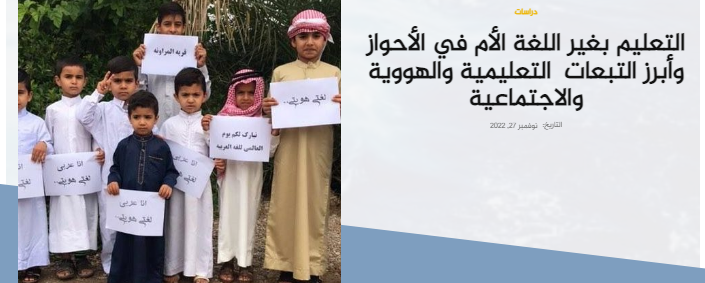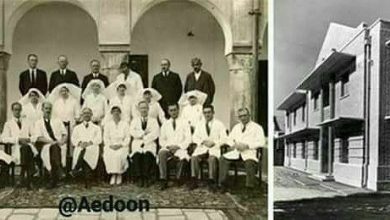
Teaching Native Languages in Iran: A Maneuver or Propaganda?
Iranian authorities recently announced a plan to teach the literature of local and ethnic languages in schools, in alignment with Article 15 of the Iranian constitution, which guarantees this right.
Iran encompasses regions such as(Al-Ahwaz, Azerbaijan, Kurdistan, and Baluchistan, home to various non-Persian ethnic groups. For decades, these groups have been denied the right to learn their native languages under both the Shah’s rule and the current regime.
A Recurring Plan or Mere Palliative?
The announcement by Iranian President Masoud Bezshkian regarding the parliamentary approval of a plan to teach local and ethnic languages in schools has sparked widespread debate. Critics question whether this is a sincere effort to promote linguistic and cultural rights or a political maneuver to ease internal and external tensions.
This is not the first such plan: over the past 43 years, similar proposals have been approved five times but never implemented. Now, for the sixth time, the plan is being put forward. However, previous attempts were abandoned, often without sufficient defense or justification in parliamentary sessions.
While Article 15 of the Iranian constitution already mandates free education in local languages, no practical mechanisms have been enacted to fulfill this promise. This history of repeated announcements followed by inaction raises significant doubts.
For instance, in 2019, a similar proposal was tabled by several members of parliament but was ultimately shelved. This cycle suggests that such announcements are little more than temporary “painkillers” or new forms of propaganda designed to placate growing discontent among non-Persian communities and deflect external pressures.
The Iranian regime appears to be leveraging these superficial decisions to pacify occupied populations during times of crisis, only to revert to harsher repression once the immediate threat passes.
Persistent Tensions and Discontent
Iran continues to witness tensions between Tehran and its non-Persian populations, who demand self-determination, particularly in regions like occupied Al-Ahwaz, Kurdistan, Baluchistan, and Azerbaijan. Increasingly, the nationalist discourse among these groups reflects their rejection of systemic marginalization and cultural suppression.
Political Propaganda Amid Crises
Given Iran’s precarious situation—exacerbated by external pressures, particularly from U.S. policies under former President Donald Trump—the regime’s claims of supporting cultural and linguistic rights seem more like propaganda than genuine reform. These efforts aim to project an image of inclusivity while failing to address the root causes of unrest.
Repeated failures to implement such plans suggest the regime’s reluctance to engage in meaningful reforms. Instead, superficial gestures are employed to calm discontent without addressing the structural inequalities that perpetuate ethnic and cultural tensions.
The Situation in Non-Persian Regions
Al-Ahwaz
The Arab population in Al-Ahwaz resides in a resource-rich region, yet suffers from economic and cultural discrimination. Protests for self-determination have intensified, especially since the region was occupied in 1925 after a British-backed conspiracy ousted Sheikh Khazal Al-Kaabi.
Al-Ahwaz contributes 87% of Iran’s oil production and 100% of its natural gas, while its fertile lands are irrigated by eight rivers, making up 65% of Iran’s arable land. Despite this, the Arab population faces severe marginalization. Many activists advocating for Al-Ahwazi identity have been arrested, further fueling mistrust of Tehran’s motives.
Kurdistan
Kurdish communities in Iran face systematic discrimination and continue to resist through protests and armed resistance. The annual commemoration of the 1979 “Day of Tragedy,” when Ayatollah Khomeini’s decree led to the deaths of over 10,000 Kurdish civilians, underscores decades of suffering.
While teaching Kurdish literature may seem like a positive step, it is overshadowed by the regime’s ongoing repression, including arrests of activists advocating for Kurdish cultural rights.
Baluchistan
Baluchistan is one of Iran’s poorest regions, plagued by economic neglect and social marginalization. The events of September 30, 2022—dubbed “Bloody Friday in Zahedan”—exacerbated unrest in the region, which has seen ongoing protests.
Teaching Baluchi literature might be viewed as progress, but the regime’s systemic oppression, including armed clashes and mass arrests, suggests otherwise.
Azerbaijan
The Azerbaijani Turks form Iran’s largest ethnic minority, yet feel alienated by Persian-dominated policies. While teaching Turkish literature could ease tensions, many Azerbaijanis continue to demand greater cultural and political recognition, viewing such gestures as insufficient.
What Lies Beneath the Iranian Plan?
Against the backdrop of escalating protests in non-Persian regions, Iran’s plan to teach ethnic languages appears aimed at defusing unrest in Al-Ahwaz, Kurdistan, Baluchistan, and Azerbaijan. The primary goal seems to be reducing domestic tensions while improving the regime’s image amid mounting international scrutiny.
However, there is little indication of a fundamental shift in policy. The regime continues to enforce the assimilation of non-Persian groups into a singular “national identity” under the guise of unity. Without structural changes and genuine respect for these communities’ rights, such plans remain mere propaganda, unlikely to alter the deep-rooted grievances of Iran’s non-Persian populations.




